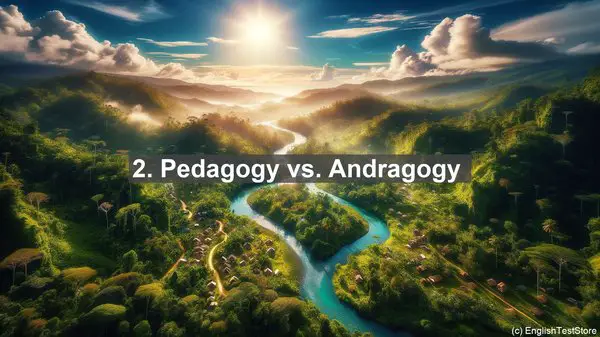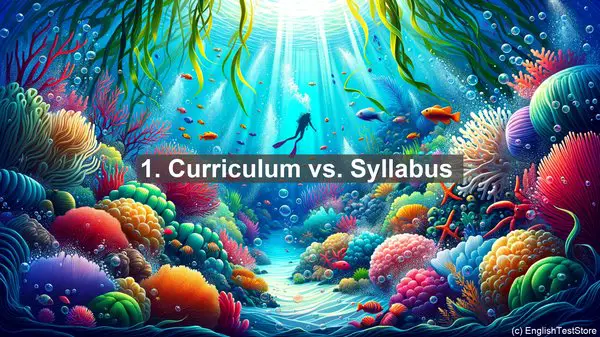Introduction
As a teacher, I often come across words that are commonly confused in the field of education and pedagogy. In today’s lesson, I’ll be discussing the top 10 of these words, explaining their differences and providing examples. So, let’s dive in!
1. Curriculum vs. Syllabus
The first pair of words that often causes confusion is ‘curriculum’ and ‘syllabus.’ While both refer to the content taught in a course, ‘curriculum’ is more comprehensive, encompassing the entire educational plan, including goals, assessments, and teaching methods. On the other hand, a ‘syllabus’ is a more specific document, outlining the topics, schedule, and assignments for a particular course.
2. Pedagogy vs. Andragogy
Next up, we have ‘pedagogy’ and ‘andragogy.’ ‘Pedagogy’ refers to the art and science of teaching children, focusing on the teacher’s role in imparting knowledge. On the contrary, ‘andragogy’ is the theory of teaching adults, emphasizing their self-directed learning and life experiences as valuable resources.
3. Assessment vs. Evaluation
Moving on, ‘assessment’ and ‘evaluation’ are often used interchangeably, but they have distinct meanings. ‘Assessment’ is the ongoing process of gathering information about a student’s progress, using various methods like tests, projects, and observations. On the other hand, ‘evaluation’ is the interpretation and judgment of that information, often resulting in a grade or feedback.

4. Bloom’s Taxonomy vs. Webb’s Depth of Knowledge
When it comes to categorizing learning objectives, ‘Bloom’s Taxonomy’ and ‘Webb’s Depth of Knowledge’ are two frameworks. ‘Bloom’s Taxonomy’ classifies objectives into six levels, ranging from simple recall to complex analysis and creation. ‘Webb’s Depth of Knowledge,’ on the other hand, focuses on the cognitive demand required to complete a task, with four levels of increasing complexity.
5. Differentiation vs. Individualization
In the realm of adapting instruction, ‘differentiation’ and ‘individualization’ are often used. ‘Differentiation’ involves modifying teaching strategies, materials, or assessments to meet the diverse needs of a group of students. On the other hand, ‘individualization’ goes a step further, tailoring instruction to the specific strengths, weaknesses, and interests of each student.
6. Inclusion vs. Integration
When discussing students with special needs, ‘inclusion’ and ‘integration’ are two concepts. ‘Inclusion’ refers to the practice of educating students with disabilities in the general education classroom, providing necessary support and accommodations. ‘Integration,’ on the other hand, involves bringing students with disabilities into the general education setting for specific activities or subjects.
7. Formative Assessment vs. Summative Assessment
The terms ‘formative assessment’ and ‘summative assessment’ often come up in discussions about evaluating student learning. ‘Formative assessment’ is conducted during the learning process, providing feedback and guiding instruction. On the contrary, ‘summative assessment’ takes place at the end of a unit or course, measuring the overall learning and often resulting in a grade.
8. Differentiated Instruction vs. Universal Design for Learning
While both ‘differentiated instruction’ and ‘universal design for learning’ aim to address diverse learner needs, they have different approaches. ‘Differentiated instruction’ involves modifying instruction to meet individual student needs, while ‘universal design for learning’ focuses on creating flexible learning environments and materials that can be accessed by all students, regardless of their abilities.

9. E-Learning vs. Distance Learning
With the rise of online education, terms like ‘e-learning’ and ‘distance learning’ are often used. ‘E-learning’ refers to any form of learning that utilizes electronic technologies, such as online courses or educational apps. ‘Distance learning,’ on the other hand, specifically refers to situations where the teacher and students are geographically separated, often relying on virtual communication and resources.
10. Growth Mindset vs. Fixed Mindset
Lastly, we have ‘growth mindset’ and ‘fixed mindset,’ two concepts that have gained significant attention in recent years. A ‘growth mindset’ is the belief that abilities and intelligence can be developed through effort and learning, while a ‘fixed mindset’ is the belief that these qualities are fixed and unchangeable. Cultivating a growth mindset is crucial for fostering resilience and a love for learning.
